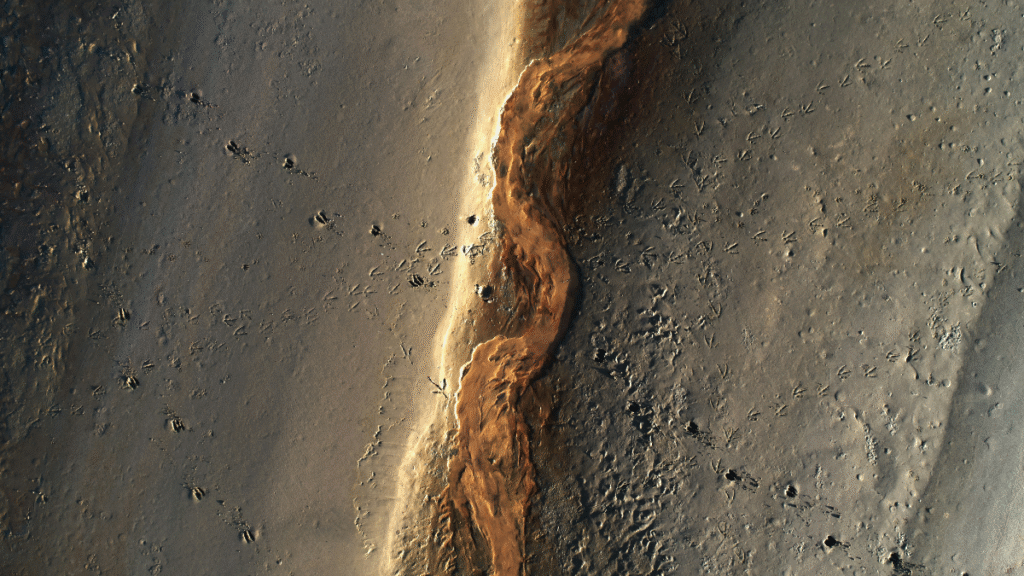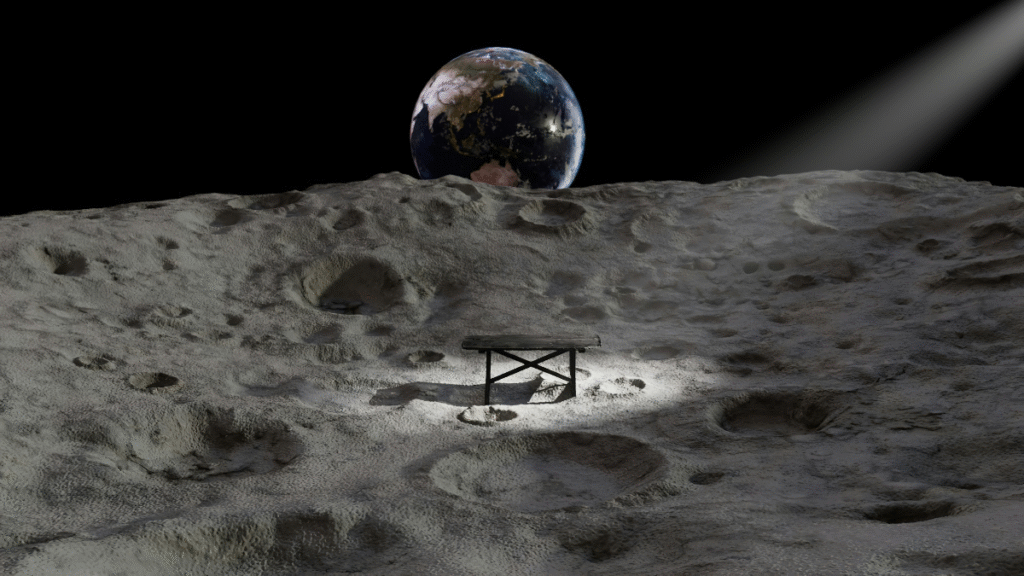NASA has reignited excitement in lunar exploration with the revival of the VIPER lunar rover mission. This mission is a pivotal part of NASA’s Artemis program, aiming to return humans to the Moon.
The VIPER rover will explore the Moon’s South Pole, searching for water ice and other resources. This mission is crucial for future lunar bases and sustainable exploration.
Blue Origin has been awarded the contract to provide the lander for this mission. This collaboration marks a significant partnership between NASA and private space companies.
The mission is set to launch in the mid-2020s, promising to deliver groundbreaking data. VIPER’s findings will inform future missions to Mars and beyond.
This mission is a testament to human ingenuity and the power of collaboration in space exploration.
NASA’s VIPER Lunar Rover Mission: A New Chapter
The VIPER lunar rover mission marks a fresh chapter in space exploration. This mission is integral to NASA’s Artemis program. It aims to reveal the mysteries of the Moon’s South Pole.
VIPER, standing for Volatiles Investigating Polar Exploration Rover, is built to endure the harsh lunar environment. Its design allows it to operate in extremely cold and shadowed regions. This will enable VIPER to explore areas never reached before.
The rover’s primary objective is the search for water ice. It will collect data on the resources beneath the lunar surface. This will have profound implications for future lunar outposts.

The mission represents an evolution in space exploration strategy. NASA is leveraging technological advancements for deeper space inquiries. This initiative could lead to new understanding and technologies for lunar exploration.
VIPER’s exploration supports the goal of a sustainable human presence on the Moon by the decade’s end. The mission’s findings will guide the development of lunar habitats. They will also influence the logistics of living off-planet.
NASA’s collaborative efforts with commercial partners like Blue Origin showcase a pioneering model of exploration. This venture is set to inspire innovation and foster scientific breakthroughs.
The Blue Origin Lander Award: A Game-Changer for Lunar Exploration
NASA’s decision to award Blue Origin the contract for the VIPER mission lander is a pivotal moment. This decision underscores the importance of public-private partnerships in space exploration. Blue Origin will play a key role in delivering VIPER to the Moon’s surface.
The lander designed by Blue Origin will safely transport VIPER. It will precisely place the rover in the targeted regions of the lunar South Pole. This partnership highlights Blue Origin’s growing influence in the space sector.
The lander award under NASA’s Commercial Lunar Payload Services (CLPS) initiative exemplifies a shift toward commercialization. It invites private companies to contribute to space missions, increasing competitiveness and innovation.
Key benefits of the Blue Origin partnership include:
- Enhanced technological collaboration between NASA and the private sector.
- Utilization of cutting-edge landing technologies for precise rover deployment.
- Expedited mission timelines thanks to commercial efficiencies.
This collaboration sets a precedent for future lunar missions. It emphasizes the synergy between government agencies and private companies. Such partnerships are essential for achieving long-term space exploration goals.
Blue Origin’s role is more than just landing VIPER. It’s a foundational step in demonstrating commercial viability in lunar exploration.
VIPER’s Mission Objectives and Scientific Goals
VIPER, short for Volatiles Investigating Polar Exploration Rover, is essential for lunar exploration. This mission’s primary goal is to assess the Moon’s resources, especially water ice. VIPER will explore the Moon’s South Pole to map water ice locations.
Understanding the distribution of lunar water ice is crucial. It’s a potential resource for future lunar bases, supporting both human and robotic exploration. The data collected will significantly improve our knowledge of extraterrestrial resources.
The rover will utilize advanced instruments to achieve its mission objectives. These include a specialized drill and various spectrometers. These tools will enable VIPER to sample and analyze the lunar surface, providing key insights.
Specific goals for the VIPER mission are:
- Locating and measuring the quantity of water ice.
- Analyzing soil samples for other volatile compounds.
- Understanding the Moon’s geological history through its surface materials.
VIPER aims to operate for approximately 100 days, gathering a wealth of scientific data. This will not only inform lunar strategies but also aid in planning missions to Mars and beyond. VIPER’s findings will contribute to the broader scientific understanding of the Moon and our solar system.
Why the Lunar South Pole? The Search for Water Ice
The Moon’s South Pole is a region of enormous interest for scientists and explorers. Unlike other areas, it has some regions in permanent shadow. These shadowed areas contain precious water ice, an invaluable resource for space exploration.
Water ice serves as more than just a drinking source. It could be broken down into hydrogen and oxygen. These elements are crucial for life support systems and fuel for rockets.

Choosing the South Pole for VIPER’s exploration wasn’t arbitrary. This region offers unique advantages for studying extraterrestrial water. The possibility of finding sizeable ice deposits here is higher than in sunlit areas.
Key reasons for focusing on the lunar South Pole include:
- Presence of permanently shadowed regions.
- Higher probability of significant water ice deposits.
- Crucial resource for future long-term lunar habitation.
Understanding the distribution of water ice can pave the way for sustainable lunar presence. This knowledge is crucial for planning future manned missions and establishing lunar bases.
How VIPER Will Explore the Moon: Technology and Instruments
The VIPER (Volatiles Investigating Polar Exploration Rover) is equipped with cutting-edge technology designed for lunar exploration. It is engineered to face the harsh conditions of the Moon’s South Pole, ensuring it accomplishes its mission.
VIPER’s exploration will utilize advanced scientific instruments. These tools are critical for analyzing the lunar soil and ice. They will allow VIPER to map water distribution accurately.
Onboard the rover, instruments like the Neutron Spectrometer System identify potential ice below the surface. The drill system will penetrate the lunar regolith to collect samples. These samples are then analyzed for water content and other compounds.
Key instruments onboard VIPER include:
- Neutron Spectrometer System: Detects hydrogen beneath the surface.
- TRIDENT Drill: Samples soil layers up to a meter deep.
- MASPEX: Analyzes gases released from samples for volatiles.
- NIRVSS: Examines soil and ice compositions using infrared spectroscopy.
VIPER will remain in contact with Earth through a relay satellite, allowing data to be transmitted back. This communication setup is essential for mission success and continuous data flow.
By utilizing these technologies, VIPER aims to unveil secrets of the lunar surface. Its findings could transform future exploration missions and expand our understanding of the Moon.
The Role of Blue Origin and Commercial Partnerships
Blue Origin plays a pivotal role in NASA’s VIPER mission by providing the lander that will deliver the rover to the Moon. This partnership marks a new chapter in NASA’s approach to lunar exploration.
The involvement of private companies like Blue Origin signifies the growing importance of commercial partnerships in space missions. These collaborations facilitate technological advancements and resource optimization.
Blue Origin’s contribution enhances the mission’s chances of success by leveraging their expertise in space technology. The company’s New Glenn rocket will carry the VIPER rover to its lunar destination. Such partnerships are part of NASA’s strategy to involve commercial entities in the Artemis program.
Key benefits of this collaboration include:
- Leveraging private sector innovation for space exploration.
- Sharing of expertise between NASA and industry leaders.
- Accelerating the timeline for mission completion.
These commercial partnerships make lunar missions more feasible and financially sustainable, setting a precedent for future collaborations.
VIPER and the Artemis Program: Building a Sustainable Lunar Future
The VIPER mission is a cornerstone of NASA’s Artemis program, aiming to pave the way for sustained lunar exploration. By exploring the Moon’s surface, VIPER’s findings will directly support Artemis’s goals.
The data collected by the rover will inform the placement of future lunar bases. Understanding the distribution of water ice is crucial for long-term human presence on the Moon. VIPER will help verify the Moon’s capacity to support human life.

The mission will influence future exploratory strategies by providing a foundation for sustainable practices. NASA’s vision of a lunar foothold by the end of the decade heavily relies on its success.
Core objectives within the Artemis program include:
- Establishing a lunar gateway.
- Supporting continuous human exploration.
- Assessing Moon resources for sustainability.
VIPER’s success will strengthen Artemis’s vision, setting the stage for advanced missions and possibly venturing beyond the Moon.
What’s Next for VIPER and Lunar Exploration?
Looking beyond the VIPER mission, lunar exploration promises to continue evolving rapidly. The VIPER’s insights will lay the groundwork for advanced robotic and human missions.
This mission signifies a critical step toward more ambitious lunar projects. With the information gathered, NASA can strategize better for establishing a long-term human presence.
The technology and discoveries from VIPER will inspire future missions to Mars. These insights will provide a template for exploring other planets with similar conditions.
Involvement from companies like Blue Origin highlights an era of public-private partnerships. Their collaboration is expected to spur innovation and introduce varied perspectives into space exploration.
As VIPER gets ready for its launch, anticipation builds around its potential discoveries. The scientific community eagerly waits for how it might reshape our understanding of the Moon. With its launch in the mid-2020s, this mission could redefine our vision of the solar system.
Conclusion: A Milestone for NASA, Blue Origin, and the Future of Space Exploration
NASA’s VIPER mission signifies a bold step into a new space age. This partnership with Blue Origin is emblematic of a future where innovation is key.
The mission’s success will foster new opportunities for exploration. This collaboration showcases the strength of public and private sector cooperation in advancing our cosmic understanding.
The potential discoveries VIPER could uncover are boundless. As we stand on the cusp of a new era, the mission promises to inspire a generation eager to reach for the stars.
Discover earn money from online…

